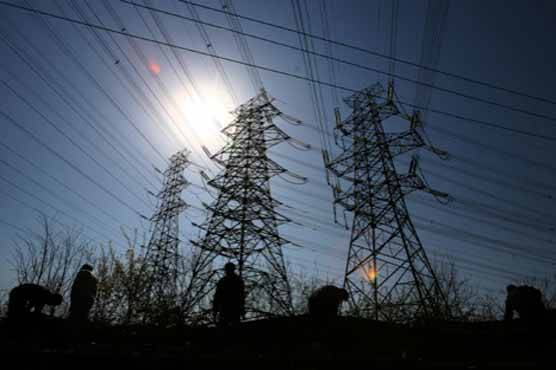Electricity load shedding is a major issue in the entire country. Violent protests against long hours of load shedding are a normal occurrence, especially during summers. Every now and then, local offices of electricity distribution companies are ransacked by protestors. These sorts of scenes are witnessed mainly in Punjab and sometimes in Khyber Pakhtunkhwa (KP). However, a lesser known fact is that Balochistan is the biggest victim of load shedding in Pakistan, all year round.
It’s winter these days and the electricity demand is low as compared to summer. There is no major load shedding in Punjab, Sindh or KP. However, Balochistan is facing severepower outages even at this time of the year.
Quetta, the capital city of Balochistan, is facing load shedding of 4 to 8 hours. Other district headquarters have 12 hours of load shedding. Small towns are supplied 6 hours of electricity on a daily basis. In most of the villages,one hour of electricity is supplied after two days. That’s one hour in 48 hours and that type of load shedding is unheard of, in the rest of the provinces.
Total electricity demand of Balochistan province is just 1,650 Megawatt (MW). The electric grid network in the province, however, can also transmit electricity up to 650 MW. In other words if there is no shortage of electricity in Pakistan,Balochistan would still have a shortage of 1,000 MW courtesy of the constraints in distribution network. Presently, Balochistan is not even supplied 650 MW. The supply is just 300-400 MW.
According to Quetta Electricity Supply Company (QESCO), the electricity distribution company of Balochistan, supply to the province has been reduced due to unpaid electricity bills which have reached Rs. 132 billion. Out of these dues Rs. 115 billion are those of the agriculture consumers. This is not a valid reason to cut down the supply of the province to almost one-fourth of total demand. Electricity companies in Sindh and Punjab also have huge amounts of unpaid dues, but supplies to the provinces have not been reduced.
QESCO needs to cut off the connection of electricity defaulters, which is the universally accepted practice. Collectively punishing an entire province due to non-payment of bills of some farmers is not only condemnable but it also exposes the apathy of QESCO and Federal Ministry of Water and Power towards people of Balochistan.
Zamindar Action Committee (ZAC), a union of farmers in Balochistan, contests the claim that agriculture users have unpaid dues of Rs. 115 billion. According to ZAC, the figure of Rs. 115 is massively exaggerated.
Dr. Kaiser Bengali, Economic Consultant of the Government of Balochistan also agrees with this notion. He recently said in an interview that while he was working for Sindh government he had discovered that unpaid bills, as stated by the federal government, are inflated by at least 40%. This implies that unpaid electricity bills of Balochistan could also be inflated by QESCO in order to compensate for line-losses and of course their negligence.
Having said that, the damage caused to the people of Balochistan is colossal. According to estimates, 80% people of the province relies on agriculture for livelihood. Absence of river water in Balochistan has resulted in the use of electricity driven tube wells for agriculture. As a result of long hours of load shedding, 47 out of 48 hours, agriculture has been completely destroyed. It has resulted in an economic catastrophe and its ramifications will come to light with the passage of time.
Here a question arises: why can’t Balochistan secure a sufficient supply of electricity like Sindh and KP? The answer is hidden in the nature of current political arrangement of Balochistan.
The current government led by Chief Minister Dr. Malik Baloch is dependent on the support of PML-N to survive. In such a case, how can Balochistan government protest against federal government for supplying the share of electricity of Balochistan to other provinces? The so-called government of nationalists in Balochistanhas caused a great deal of misery for the masses of Balochistan.
Another important thing to note is that over 2,200 MW of electricity is produced in Balochistan by the four power plants but the province only gets 400 MW. The rest of the electricity produced in Balochistan is supplied to the national electric grid. Gaddani power coal project, which has now been shelved due to financial constraints, was the much touted electricity generation project of PML-N government. It was supposed to produce 6,600 MW of electricity and not a single MW would have been supplied to Balochistan once it had started working.
Due to a lack of media attention, the problem of electricity load shedding of Balochistan is not very well known in Pakistan. Currently, the federal government is over-enthusiastic about increasing electricity production or at least seems to be. However, solving the same problem in the restive province of Balochistan is not on their agenda. Dr. Malik Baloch and company are content with non-stop electricity supplied to VIP zone of Quetta city.
Bottom line: the sufferings of people of Balochistan due to load shedding will continue indefinitely.






